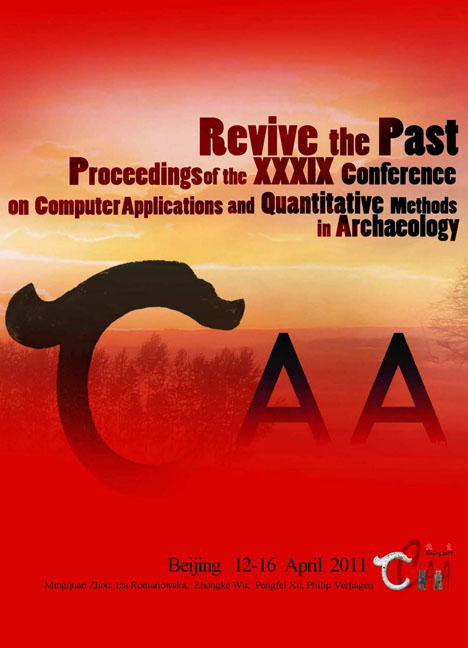 Revive the Past
Revive the Past Bayesian Spatial Analysis of Archaeological Finds and Radiocarbon Dates: An Example from Finland 4000-3500 cal BC
Published online by Cambridge University Press: 23 June 2021
Summary
Abstract:
Typologically dated archaeological finds together with radiocarbon (14C) dates can be used as proxies for ancient human activity and occupation. We carried out a Bayesian spatial analysis of a selected set of radiocarbon dates and archaeological finds from the area of Finland and ceded Karelia, specifically focusing on the time period of 4000-3500 cal BC. The spatial posterior distributions were produced by a spatio-temporal model known as Besag-York-Mollie (BYM). In general, the resulting maps comply with the pre-existing archaeological understanding. The methodology presented here is one of the first efforts of Bayesian statistical analysis with different types of archaeological data from this area. Moreover, our approach easily allows for utilizing different types of data, be it archaeological, geographical or palaeoclimatologic.
Key Words: Bayesian, Spatial Analysis, Typical Combed Ware, Radiocarbon Dating, Finland
Introduction
Summed probability distributions of radiocarbon (14C) or even tree-ring dates of archaeological finds have been used as proxies for population history events in recent studies (e.g. Gamble et al. 2005; Oinonen et al. 2010; Ortman et al. 2007; Shennan and Edinborough 2007; Tallavaara et al. 2010). This approach is especially suitable for studies on a regional scale rather than global scale. Here, we apply a Bayesian method, which enables us to combine different classes of information and can be expanded by additional data. The same method is also applied by Onkamo et al. (in press).
This study aims to construct a spatial distribution of archaeological finds in Finland and ceded Karelia (Fig. 1). Ceded Karelia refers to the region southeast of the current borders of Finland, which was part of the country before the Moscow Armistice signed between Finland and the Soviet Union in 1944. More generally, we develop a method to visualize and process different types of data: locations of radiocarbon dates and typologically dated archaeological finds. We concentrate on the period of 4000- 3500 cal BC, as it represents the most prominent era of Typical Combed Ware (TCW) ceramics in the prehistory of eastern Fennoscandia. Moreover, the population reached a peak at that time (Tallavaara et al. 2010). The climate was at its temperature maximum, which probably contributed positively to the environmental productivity and thereby to the resource availability for the hunter-gatherers living in the area (e.g. Tallavaara and Seppä in press).
- Type
- Chapter
- Information
- Revive the PastProceedings of the 39th Conference of Computer Applications and Quantitative Methods in Archaeology, pp. 318 - 325Publisher: Amsterdam University PressPrint publication year: 2012


